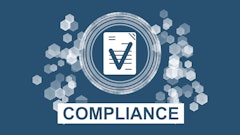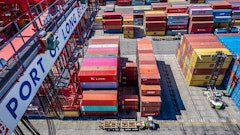
By Wayne Slossberg
Organizing corporate global trade management (GTM) information is the single biggest challenge facing firms engaging in global trade. Too often, companies attempt to "manage" critical data by entering them within spreadsheet columns. While spreadsheets serve many valuable functions, they inherently lack internal controls. It is difficult to track who accessed them, who made changes, what changes they made and when. When spreadsheets are linked — as they often are — the cascading effect of one misstep can be enormous.
Most companies will give compliance personnel access to the corporate enterprise resource planning (ERP) system, allowing them to enter some product data and perhaps even the related Harmonized Tariff Schedule (HTS) codes used to determine tariff classifications for importing goods into the United States. However, ERP systems are limited in the trade functions they can perform, putting corporate compliance at risk.
For example, consider the case where a firm manufactures the same product in multiple countries concurrently. Different regulations apply to the same product in each locale, and different compliance documentation requirements exist. How do you manage that with a spreadsheet or an ERP system? If you get a binding ruling on a specific product, how do you attach that ruling to the product? If HTS codes change, how do you manage those revisions in an update?
On the vendor side, you might want to screen your manufacturers. You also may want to manage their C-TPAT certification. How do you do that? As concerns exporting, you must ensure that product is not being shipped to entities on denied party lists or is a restricted item that needs a license. How do you verify that? Neither spreadsheets nor ERPs are equipped to perform these tasks. Only GTM technology possesses the required functionality to perform the many diverse tasks compliance demands.
Then, too, there is the issue of sourcing. Given that the impetus for global trade will only continue to grow — and economic pressures increase to manufacture in locales that are cheaper — a key question will remain, "Where are you going to source?" GTM technology — especially with an Automated Broker Interface (ABI) connection (more on this below) — offers a quick way to gain a comprehensive global sourcing look without a lot of painstaking research. How do you identify all the countries offering special programs and compare them? Getting a fix on landed costs can be difficult and time consuming, because you must not only look at the comparative cost of freight using different freight forwarders and brokers, but also the breakdown of harbor fees in different ports within and across countries. GTM software can typically deliver comparative data quickly with minimal effort.
Starting Small
However, acquiring a GTM system often is beyond a firm's budget or simply not a priority item among its C-level executives. So is there an alternative strategy compliance staff can pursue? Yes. Implement a piece of technology, such as a compliance product database, that organizes trade information and delivers basic GTM functionality. However, be smart and select a product that provides a pathway for automating more advanced trade-related processes later on.
A product database will not only give you control over your products and vendors, but also facilitate efforts to control costs: landed costs, pricing and so on. Most important of all, you get a handle on the ever-changing customs rules and regulations and how they apply to your products and vendors. Achieving this control offers a huge business advantage to companies, as any firm that has ever undergone a focused assessment or had product held up or destroyed because of documentation issues can attest.
Of course, many companies can be overly focused on "what they do" and fail to take into account the total picture — a very shortsighted approach. When a product database is introduced — and spreadsheets eliminated — compliance personnel gain an overall view of products, pricing, compliance requirements and documentation. Information is power, and visibility brings both new business options and management control.
Few recognize the significance of achieving management control via a product database. Reliance on customs brokers and freight forwarders has given them a false sense of security. However, the U.S. Customs' Importer Security Filing (ISF) program, also known as "10+2," is bringing the issue of management control to the forefront and illustrating the dangers of relying on others to compile documentation on your behalf without the benefit of a product database. Recently, an electronics firm that had its third-party logistics provider (3PL) prepare its ISF filings decided to transition to an ISF technology driven by a compliance product database. When the system went live, the software identified over 300 errors in the ISF documentation for the very first day's shipments. It was not the fault of the 3PL preparing the ISFs; it was the information the firm furnished to the 3PL.
In this case — as is the case in many organizations — multiple independent parties furnish the input needed to prepare ISFs, increasing the margin for error. A product database limits opportunities for mistakes by validating input against a central database. As Customs moves toward strict enforcement of ISF, many companies likely are going to experience real problems. They are relying on the proliferation of ISF offerings currently flooding the marketplace that operate with a quasi-product database or, worse, an independent product database.
Four Criteria for GTM Solutions
So what should you look for in a solution? Whether purchasing a product database or a full-blown GTM system, the first thing any firm should look for is a vendor that (1) specializes in GTM and (2) holds Automated Broker Interface (ABI) certification or ABI connection (go here for a vendor list). This certification means that the firm's technology is qualified in some cases to file import data electronically with Customs or be updated electronically from Customs. ABI expedites product movement and release through electronic transmission, validation, confirmation and correction of entry summaries; it also allows electronic payment. Moreover, ABI vendors have access to ABI messaging that keeps parties informed of the most current status information and advises them of any outstanding issues. Most important of all, ABI certification means that the content fueling your GTM technology is as up-to-date as possible.
Second, consider looking for a firm that offers its solution both as licensed software (purchased and placed behind your firewall) and as a software-as-a-service (SaaS) offering. Firms that have truly Web-based software should be able to offer both deployment options simultaneously. If a firm cannot give you both deployments, you may be purchasing older technology that really isn't Web-based but rather is "disguised" to look as though it is. True global trade management means you want your vendors, freight forwarders, brokers and others to be able to access and use the system over the Internet from wherever they are located in the world.
If you do opt to go the SaaS route, research both your costs and how they are assessed (per transaction?). Find out what provisions exist should your provider go out of business. Most vendors say they will provide your data in that event, but will you have the application to actually use your data? If you can't mine the data, simply having the file is meaningless.
Third, look for certifications. If you have a certain ERP system, check whether the GTM vendor's software has been certified for integration with that ERP system or has interfaced with similar systems.
Fourth, look for GTM solutions that are totally integrated and allow you to phase in implementation over time. For example, today a firm's most pressing need might be to acquire a compliance product database. Six months down the road, however, the company may want to prepare its own ISFs and self-file. A year from now the firm might want to have a site designated as a Foreign Trade Zone. Does the vendor have all those fully integrated modules available to plug into that centralized compliance database? Firms should only have to integrate one time, even though their business needs will grow and change over time.
The GTM space is a narrow vertical, and vendors within it offer impressive technology. Use these four pointers to select the vendor and the product that are right for you.
About the Author: Wayne Slossberg is vice president of QuestaWeb, Inc., a Westfield, N.J.–based provider of Web-based global trade and logistics management solutions. His knowledge of ERP, CRM, MRP, PLM and GTM applications has helped fuel the growth of numerous technology firms. He can be contacted at [email protected]. More information on QuestaWeb at www.questaweb.com.






























